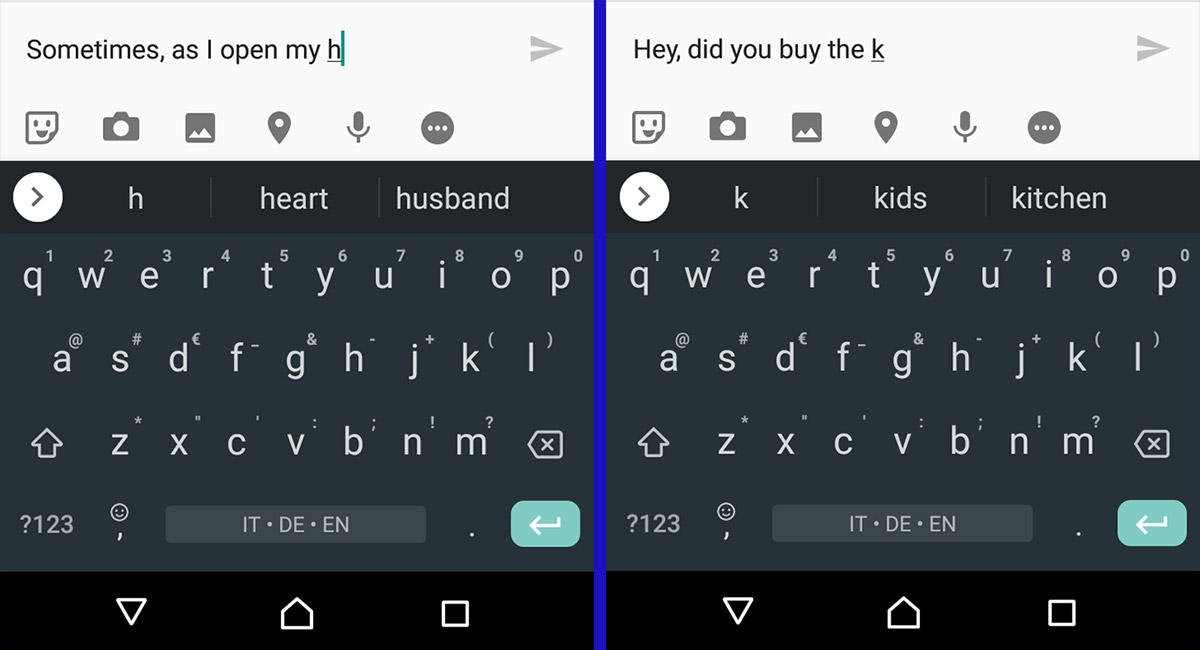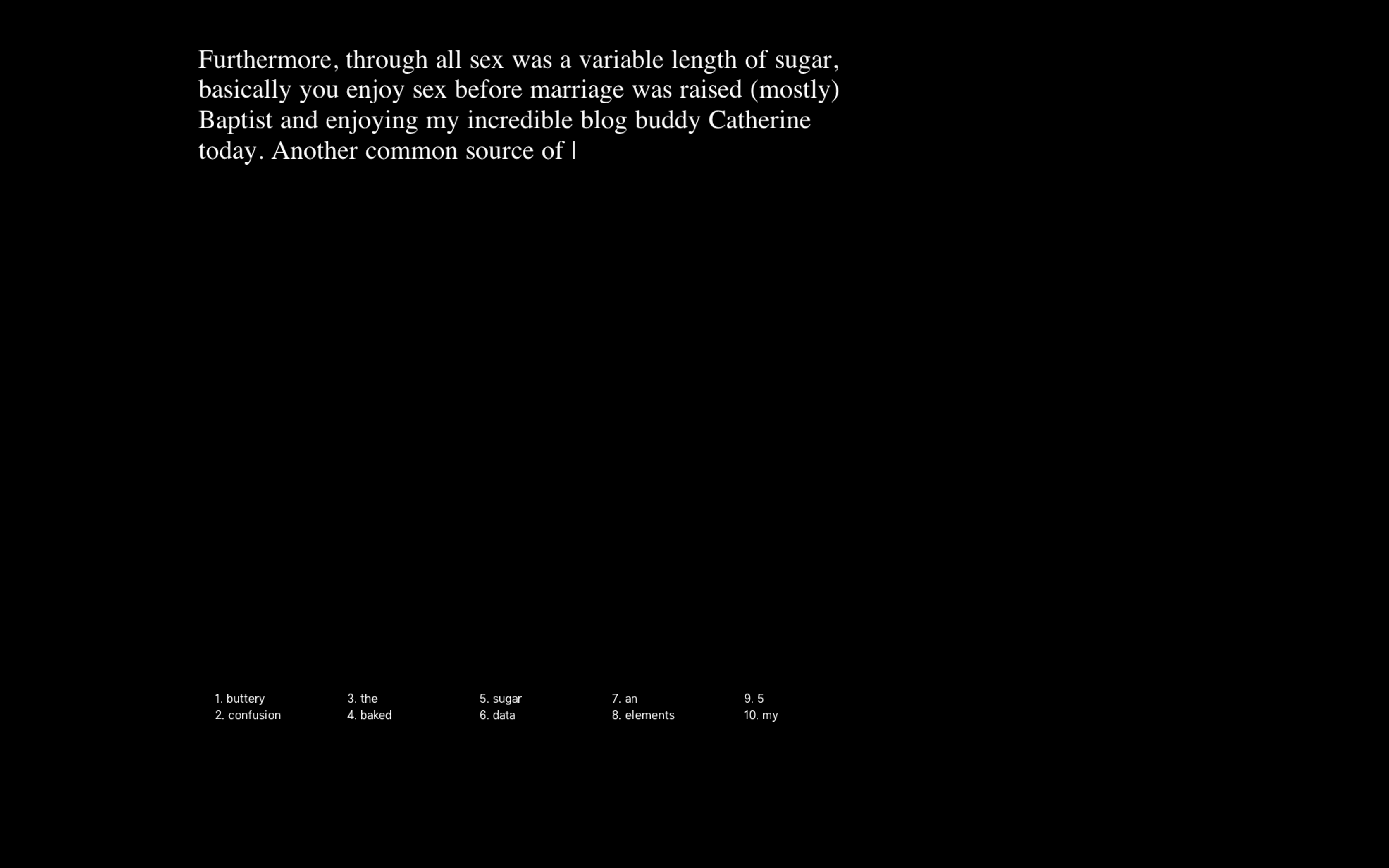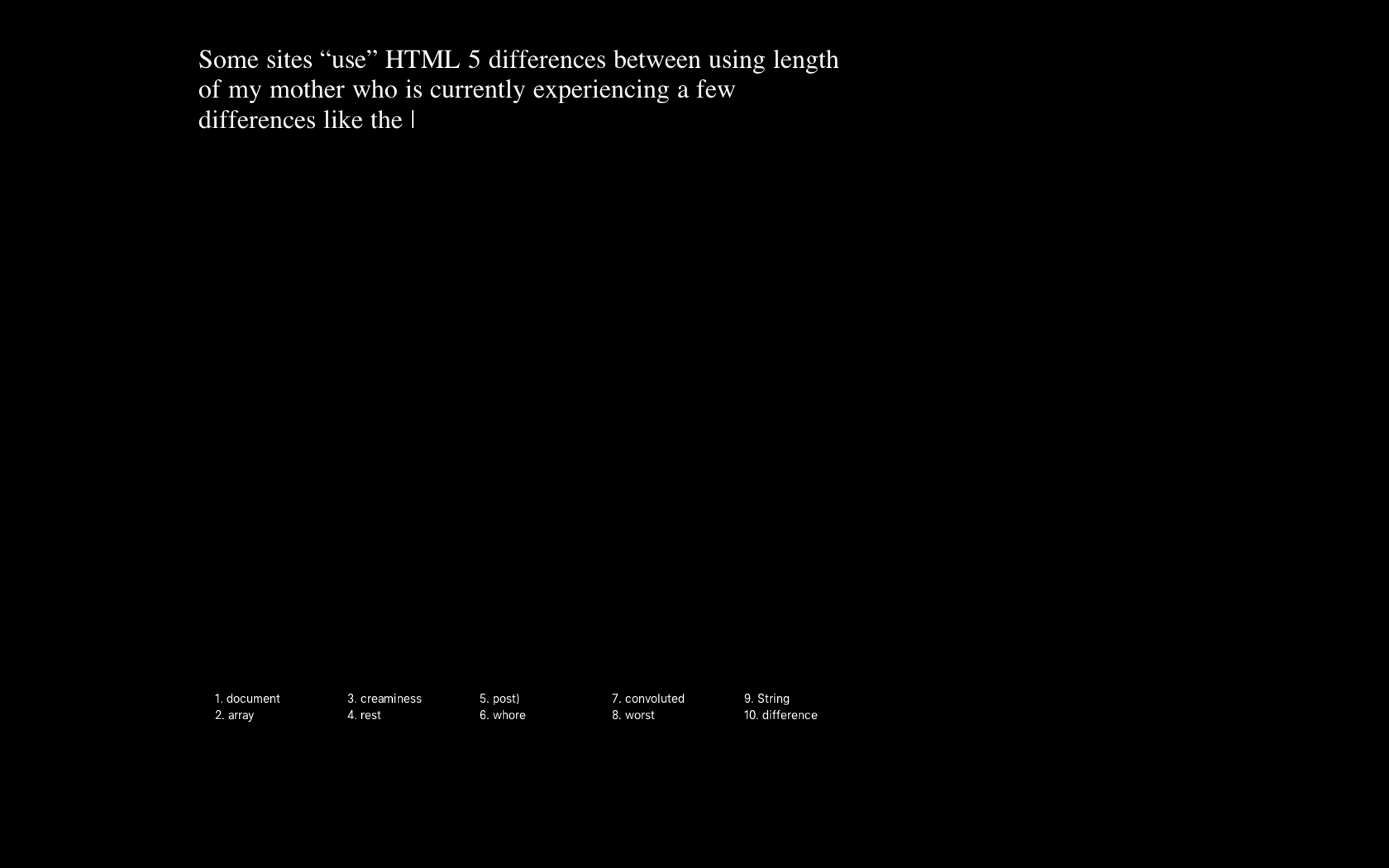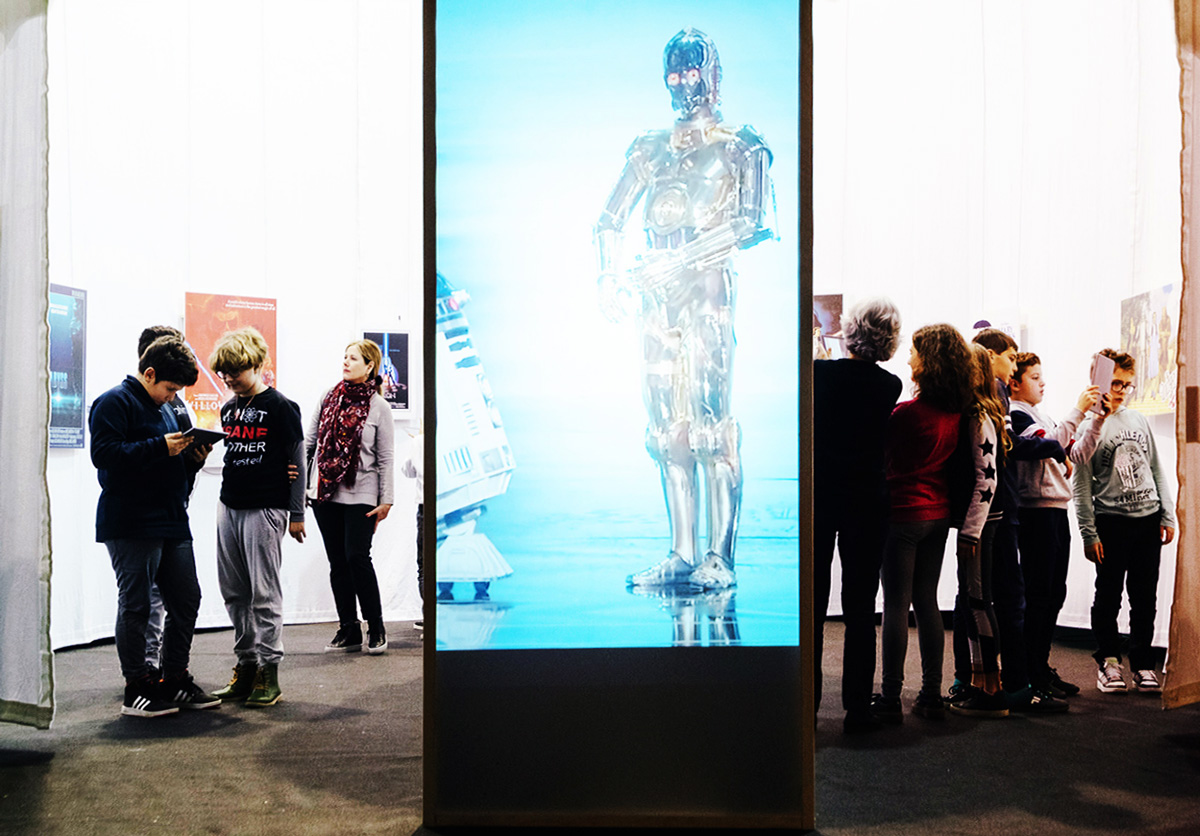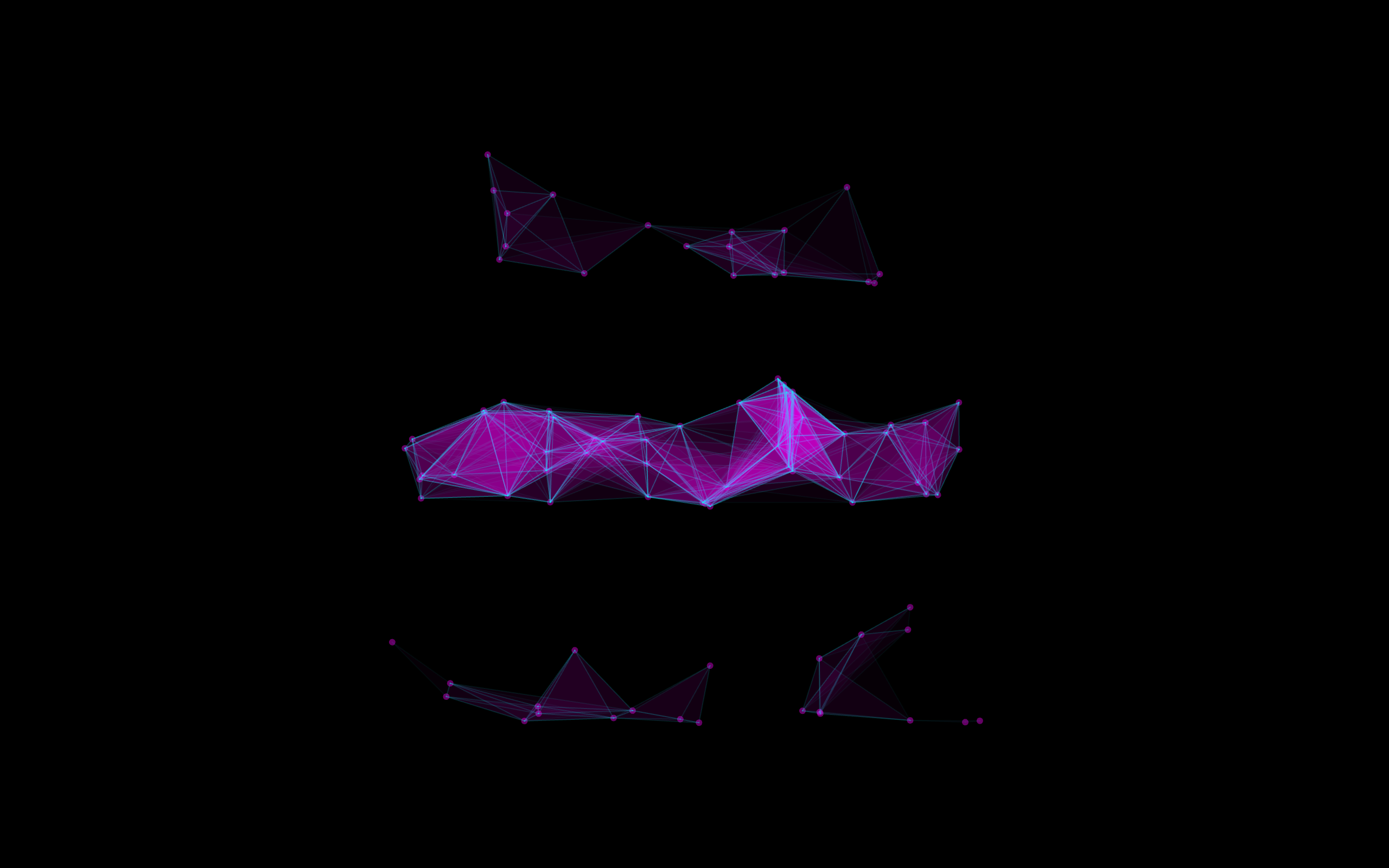The DaDa Type
DaDa Type is an improvisational and unpredictable text composer.
The user can provide the system with different texts (cooking recipes, tech articles, sex or travel blog posts), and then the DaDa Type creates a cross-text catalog of suggestions.
When starting the system, the user is provided with an "ice-breaker" and ten word suggestions that are following it in all texts. He/She is then invited to select one of the provided suggestions in order to continue the sentence. Depending on the provided texts, the following words may be more or less meaningful, taking the whole sentence meaning to a whole different perspective.
When the texts' subjects and the writing style (technical vs "friendly") are completely different, the whole experience becomes surprisingly engaging, and the user can have fun or even get inspired by the results.
Have a look at the gallery to see how crazy the sentence can go. Don't you notice that the "structure" sometimes sounds correct even if the meaning is lost?
This experiment was made using Processing, an I'm planning to build a browser based DaDa Type, to let people experiment and have fun with it.
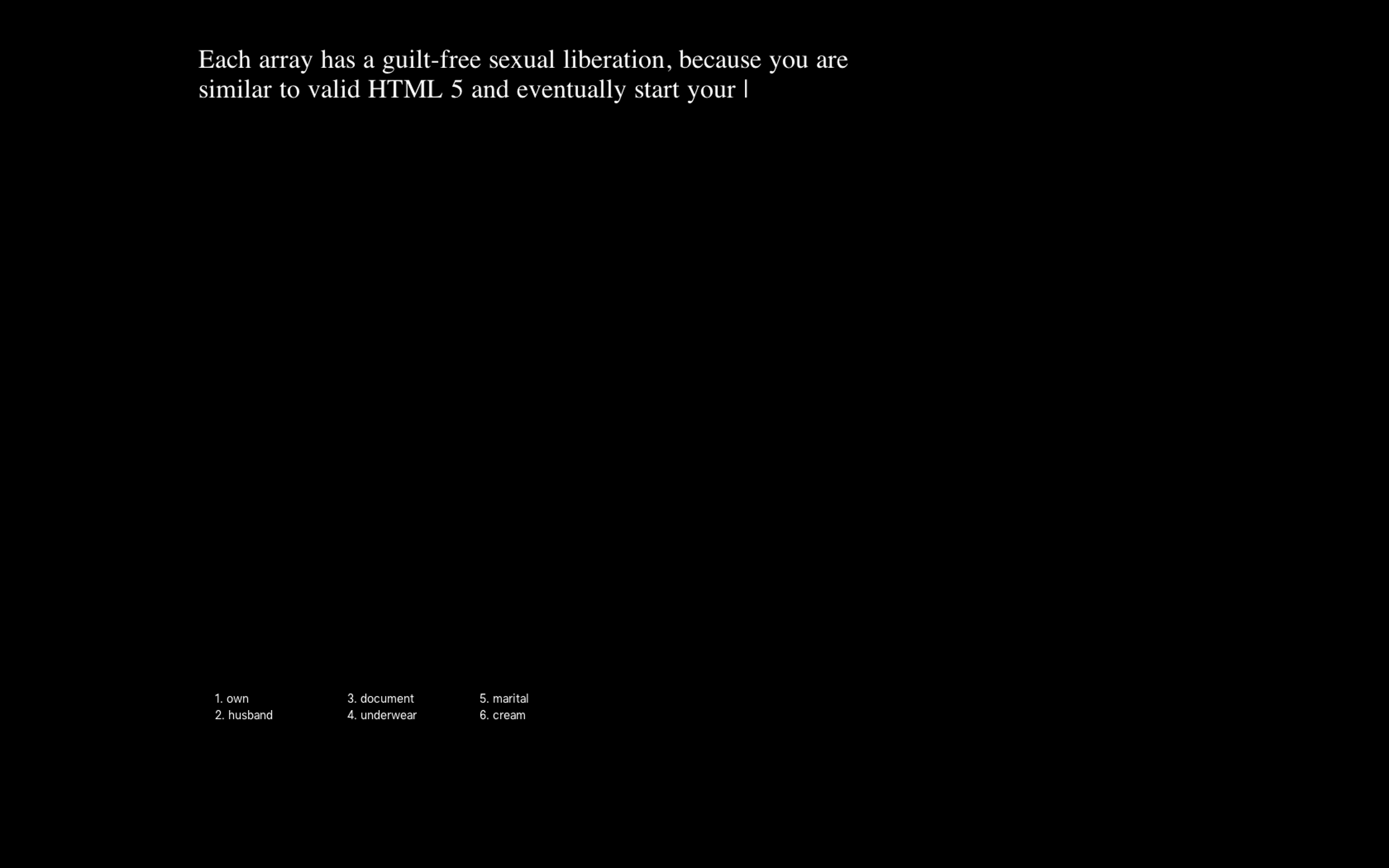
Course brief
Messages are the key to communication, but what is a message, and what kind of communication layer can be used for its transmission and what are the requirements for being able to communicate?
The goal of the course "Programming interactive objects 2" was to explore the different ways we can communicate with a computer, understand what kind of messages can be used based on the "senses" we want to involve in the process, and build a communication system.
Every communication process involves rules and standards.
Languages have words, verbs, adjectives, and specific ways to use them. Morse has duration and intensity. Digital communication uses data packets and addresses. And the communication is effective if both parts have the ability to recognise if what they hear, see or feel is a message, and if they're the recipient.
Randomness and improvisation
And then, in my mind something happened (oops, I did it again!), and everything started with one simple question.
"What if we don't know the language but we still want to communicate?"
Ok, that may sound totally nonsense, but let's think for a second about the weird dynamics of the word suggestion feature on mobile phones.
Does the application really know the meaning of what it's suggesting us? How many times have you read a suggested word that totally didn't make sense?
The idea of "randomly generated content" is not something new. Dadaism and futurism used it as an expressive form since the the end of the ninetieth century.
Improvisation was the key of their artistic performances, and a certain amount of "structured randomness" was their very distinctive artistic style.
